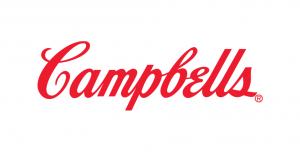
Third quarter earnings
For its third quarter, Campbell Soup Company (NYSE:CPB) earned $0.57 per share, or $181 million, up from $0.55 per share, or $177 million, in the prior year quarter. Revenue rose 15% to $2.09 billion, and 4% on an organic basis, which excludes acquisitions and currency impacts. Analysts had been expecting Campbell Soup to earn $0.56 per share on revenue of $2.0 billion.
The company’s top and bottom line growth was aided by last year’s acquisition of Bolthouse Farms, which sells baby carrots and premium juice. Bolthouse Farms contributed to nearly 10% of Campbell Soup Company (NYSE:CPB)’s top line growth. Its Pepperidge Farm snack foods segment also benefited from the collapse of Twinkies maker Hostess.
A well-balanced portfolio
Campbell Soup is well-balanced both domestically and internationally, with a diverse portfolio of packaged meals, snacks, soups and beverages. During the third quarter, the company posted positive growth in all segments except for its North American Foodservice and U.S. Beverages segments.
Business Segment | 3Q Sales | Y-O-Y Growth | Percentage of Total Revenue |
U.S. Simple Meals | $627 million | +11% | 30% |
Global Baking & Snacking | $568 million | +5% | 27% |
International Simple Meals & Beverages | $357 million | +2% | 17% |
Bolthouse Farms & North American Foodservice | $344 million
| -10%
| 16.5% |
U.S. Beverages | $198 million | -5% | 9.5% |
Source: Campbell Soup 3Q Report, author’s calculations
Hot soup and bread
Campbell Soup Company (NYSE:CPB)’s U.S. Simple Meals segment, which include its soups and sauces, benefited from an 11% increase in sales volume and product mix. Cold weather and new products helped drive demand for hot soup. Sales of its U.S. soup brands, which include condensed, ready-to-eat and broths, all rose by double digits.
Ready-to-eat brands, such as its Chunky Soup label, surged 18% thanks to new soup varieties and heavier advertising during NFL events. Putting soup in pouches, rather than cans, also attracted a new demographic of younger and more affluent shoppers. The segment’s operating income rose 30% year-on-year, aided by higher prices.
CEO Denise Morrison helped turn around the ailing soup segment after two years of consecutive sales declines. Her tactic was to improve the taste of its existing soups, add more diverse products, and trim advertising costs by focusing on core demographics. She expressed confidence in the soup segment, stating, “We are confident that we can now drop the word ‘stabilize’ from our strategy.”
The global baking and snacking segment produces bread, cookies, snacks and other baked goods. The segment, which includes Pepperidge Farm, benefited greatly from the bankruptcy of Hostess, which makes Wonder Bread, Twinkies and other baked snacks. However, increased marketing and administrative costs caused operating income to come in flat.
Internationally, Campbell Soup Company (NYSE:CPB)’s prepared meals and beverages demand was high in Latin America, Europe and the Asia-Pacific region. However, demand in Canada declined. However, the segment’s surprisingly robust performance in Europe fueled an 8.1% rise in operating income.
Plans to revive V8
Demand for its U.S. beverages, especially V8, remained low. The 5% slump in sales also led to a 26.7% decline in operating income, due to lower sales volume and higher promotional expenses. Morrison stated that the company is using the same approach it used with its soup business – improving the taste and diversifying into new flavors – to revive its V8 business. Morrison specifically mentioned V8 energy drinks as a possible avenue of growth. However, she acknowledged that the shelf-stable juice business is a competitive, slow growth market.
Lastly, although its newly acquired Bolthouse Farms business generated $205 million in sales, it is in the same segment as Campbell Soup’s lagging North American Foodservice division. The Foodservice division’s loss was due to the loss of a major restaurant contract. Yet gains in Bolthouse’s premium juice business helped offset those losses, and operating income rose 35% to $27 million.
The Foolish Fundamentals
Campbell Soup competes with other large packaged food companies, such as General Mills, Inc. (NYSE:GIS) and Mondelez International Inc (NASDAQ:MDLZ).
General Mills, Inc. (NYSE:GIS) produces Cheerios cereal, Progresso soups, Yoplait yogurt and Haagen-Dazs ice cream. During its third quarter, General Mills’ top and bottom line growth were slightly weaker than Campbell Soup’s, with its net income rising 1.8% and its sales increasing 7.5%. Organic growth came in at 2%.
However, General Mills, Inc. (NYSE:GIS) is a much larger business, with a market cap of $32 billion compared to Campbell Soup’s $14 billion, so slower year-on-year growth was expected. Yet over the past five years, General Mills has significantly outperformed Campbell Soup on both top and bottom line growth, but this could change with Campbell Soup’s stabilization of its soup business and further improvements in beverages.

Meanwhile, Mondelez International Inc (NASDAQ:MDLZ), which was spun off of Kraft Foods last year, is the 800-pound gorilla in the snack foods segment. Mondelez creates some of the most well known cookies and candy in the world, including Oreo, Chips Ahoy!, Ritz, Toblerone and Cadbury. It also sells packaged beverages such as Tang.
During its most recent quarter, Mondelez International Inc (NASDAQ:MDLZ)’s adjusted earnings per share and revenue plunged 40.4% and 33.2%, respectively, from the prior year quarter. Although those numbers looked bleak, analysts are still bullish regarding the company’s growth prospects in emerging markets, which comprises 40% of its top line.
A comparison of these three companies’ fundamentals reveals that Campbell Soup Company (NYSE:CPB) isn’t the best choice in the sector, but it is still a decent alternative to General Mills. Mondelez, on the other hand, has much stronger growth potential than either Campbell Soup or General Mills, but it is prone to wild price swings due to its heavy exposure to volatile emerging markets.
Forward P/E | 5-year PEG | Price to Sales (ttm) | Return on Equity (ttm) | Debt to Equity | Operating Margin | Profit Margin | |
Campbell Soup | 16.83 | 3.18 | 1.85 | 62.08% | 390.39 | 16.32% | 9.12% |
General Mills | 16.77 | 2.41 | 1.86 | 22.14% | 95.22 | 16.78% | 10.41% |
Mondelez International | 17.60 | 1.65 | 1.60 | 5.22% | 57.95 | 11.76% | 7.93% |
Advantage | General Mills | General Mills | Mondelez International | Campbell Soup | Mondelez International | General Mills | General Mills |
Source: Yahoo Finance, 5/21/2013
The Foolish Bottom Line
If Campbell Soup Company (NYSE:CPB) can keep maintain the momentum in its soup segment and turn around its V8 brand, then investors can expect this stock to rally to new highs. In addition, it still pays a 2.40% quarterly dividend.
Meanwhile, its competitor General Mills has risen 26% over the past twelve months as well. Therefore, I believe that these stocks from the packaged foods sector, along with consumer goods, are excellent core holdings for conservative, income-focused investors, especially when the market is constantly flirting with all-time highs. In the stock market, slow and steady wins the race more often than you might think.
The article Can This Packaged Foods Giant Keep Growing? originally appeared on Fool.com and is written by Leo Sun.
Leo Sun has no position in any stocks mentioned. The Motley Fool has no position in any of the stocks mentioned. Leo is a member of The Motley Fool Blog Network — entries represent the personal opinion of the blogger and are not formally edited.
Copyright © 1995 – 2013 The Motley Fool, LLC. All rights reserved. The Motley Fool has a disclosure policy.



